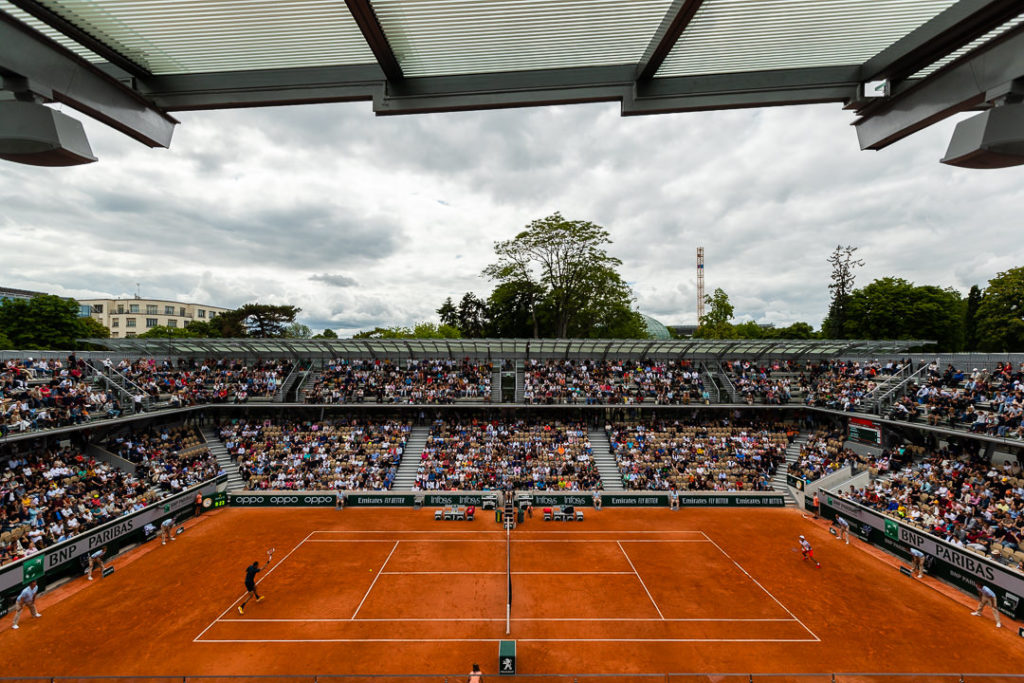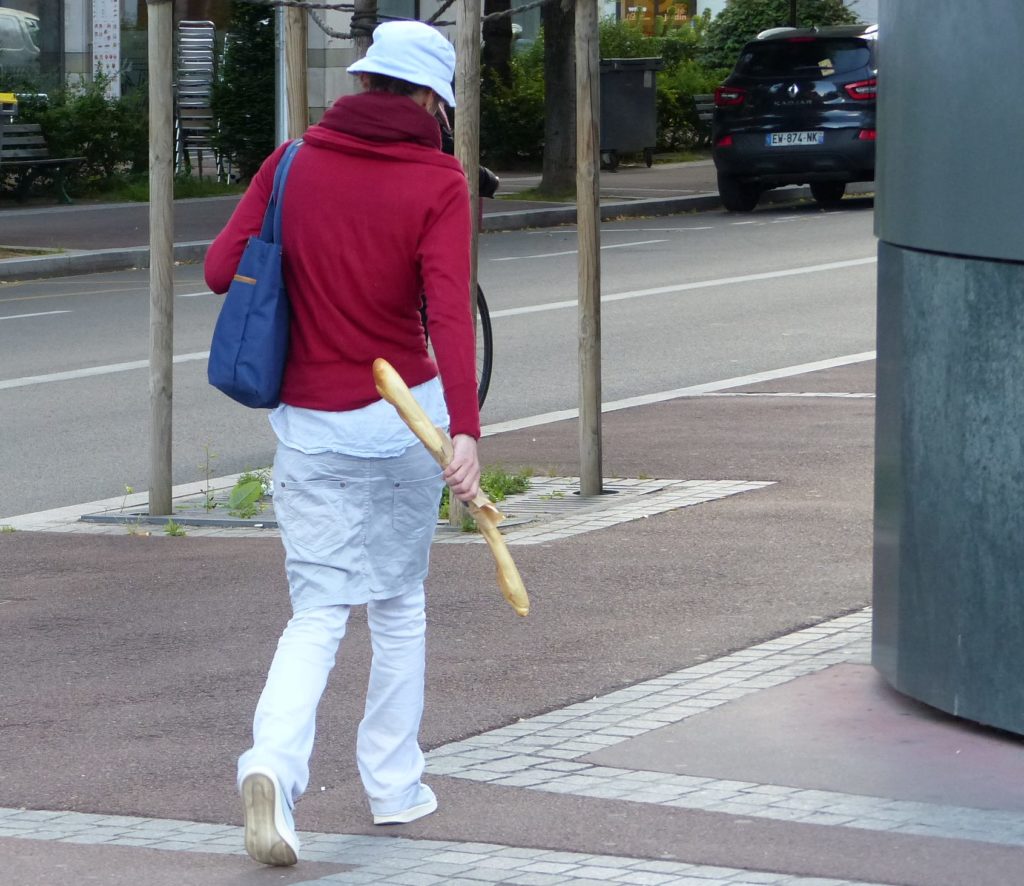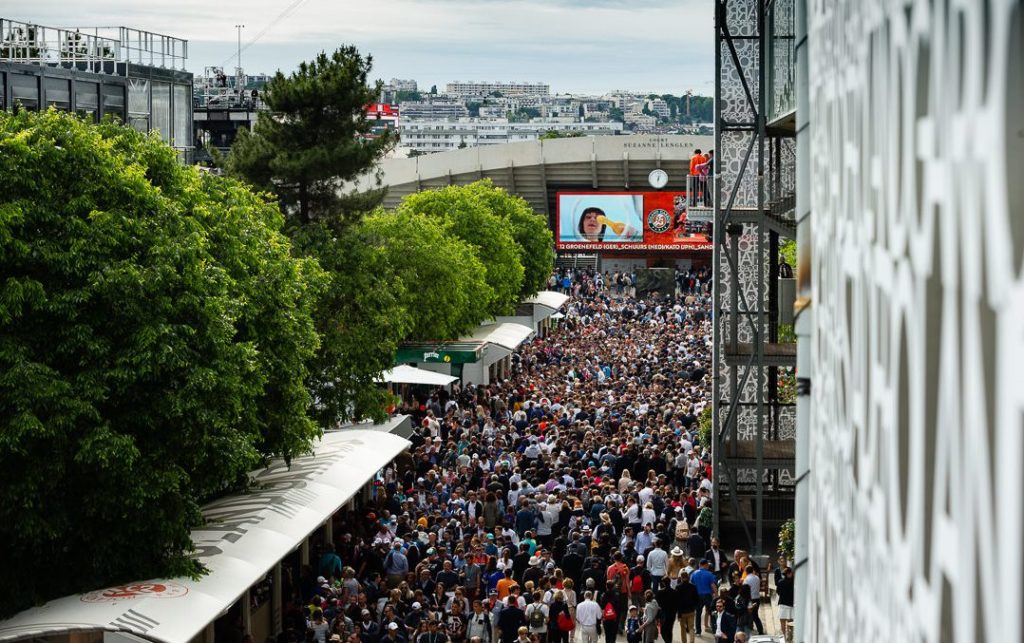
PARIS
There have been major changes at the French Open since last year’s event.
The most obvious one is the rebuilding of Court Philippe Chatrier to prepare it for the retractable roof that will be in place for the 2020 edition.
As well, there has also been the opening of Court Simonne Mathieu at the eastern end of the grounds and the upgrading of the west side (beyond the Court Suzanne Lenglen) with three new tiered-seating courts – No. 12, No. 13 and No. 14.
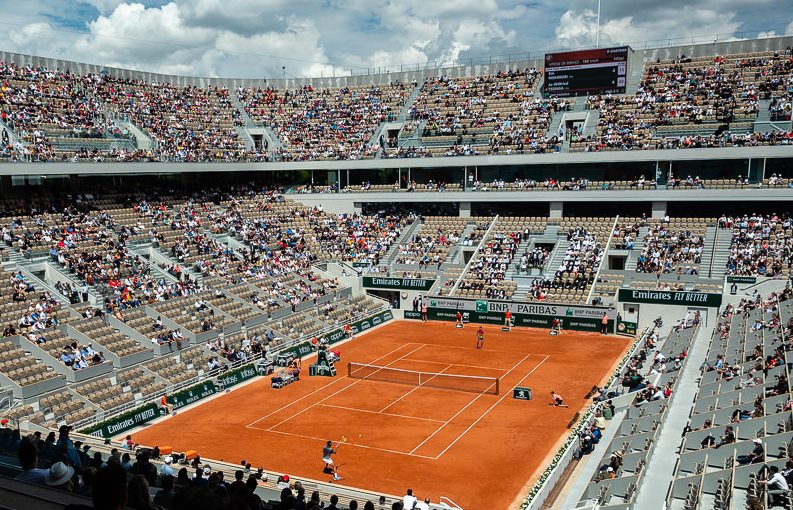
Seeing Chatrier without a roof is awesome – it feels bigger with its lighter-coloured beige seats. There’s a U.S. college football stadium feel about it now that it has rounded corners. But mainly, without any roof superstructure installed, it feels airy and bright in a way that it will not feel when the roof is in place. That roof, by the way, will be half of the weight of the 324-metre high Eiffel Tower.
This year, Chatrier is like 2007 at Wimbledon when the old overhanging Centre Court roof had been removed in the process of getting ready for the fully-operational retractable roof in 2009. It was the most open and cheerful Centre Court has ever been or ever will be – except when the weather didn’t co-operate.

Media members are pleased with the Chatrier rebuild. Their seats are now located behind the court – as opposed to under the upper deck on the west side since 1988 – and there are lots of them extending the complete length of the back of the court.
The new Court Simonne Mathieu is a tour-de-force with its design meant to blend in with the botanical gardens next door. The French Tennis Federation had a nearly eight-year, highly-litigious battle with local residents – known as riverains – to expand into the botanical gardens. As part of the final agreement, the court was sunken and the above-ground structure made to have a greenhouse appearance – and there actually are trees and plants behind glass at the south end.
On days with not overly-crowded pathways, spectators can actually smell the plants and trees as they saunter along the pathway to Simonne Mathieu.
As for the new courts beyond Suzanne Lenglen, they’re part of an effort to spread out spectators attending Roland-Garros. It works to some extent but there are still logjams of people trying to go to and fro around Suzanne Lenglen to reach or leave the courts.
As needed as the changes have been, the big issue that still remains is the extreme crowding (see top picture) that exists between Chatrier and Suzanne Lenglen.
As the picture above of the Roland-Garros layout shows, the site is basically linear and when spectators funnel together – especially when fans in one or both of Chatrier and Lenglen are exiting, it’s not a pretty sight or a comfortable situation.
The reason any change is limited is because Roland-Garros in squeezed between the large Bois de Boulogne park on one side and the riverains and their residences on the other. And neither is about to move anywhere.
The three other Grand Slams – Wimbledon and the Australian and US Opens – are in locations that have allowed them to expand, which each one of them has done over the last few decades.
For the moment, and for the foreseeable future, visitors to the French Open are just going to have to enjoy all of its abundant charms while learning to live with gridlock when they’re trying to move around the grounds.
BIANCA: A PAUSE AGAIN

Sometimes you do everything right and things still turn out wrong.
Bianca Andreescu and her team were extremely careful not to rush her return from a tiny (two millimetres) shoulder tear dating back to tournaments in Indian Wells and Miami in March. They erred on the side of caution as the 18 year old took five weeks off without swinging a racquet and then another four for rehab, training and gradually hitting balls before this week’s French Open.
Still the old problem resurfaced during a hard-fought 5-7, 6-4, 6-4, two-day victory over Marie Bouzkova of the Czech Republic on Monday and Tuesday that lasted a total of three hours and two minutes.
Andreescu lost six months in 2016 with a foot stress fracture and was bothered by a back problem on and off in 2018 and into 2019. Those issues seem to have been dealt with and managed.

The hope now is that she will be ready for some part of the grass-court season, including Wimbledon, where she qualified as a 17 year old two years ago but has yet to win a main-draw match. “The Big W” begins on July 1st – Canada Day – and it would certainly be something if Andreescu was in the draw and ready to go.
She’s currently ranked No. 23 with 1973 points. With her losing just 80 of those points between now and the US Open, she’s in no particular rush to return just to ensure her ranking doesn’t slide.
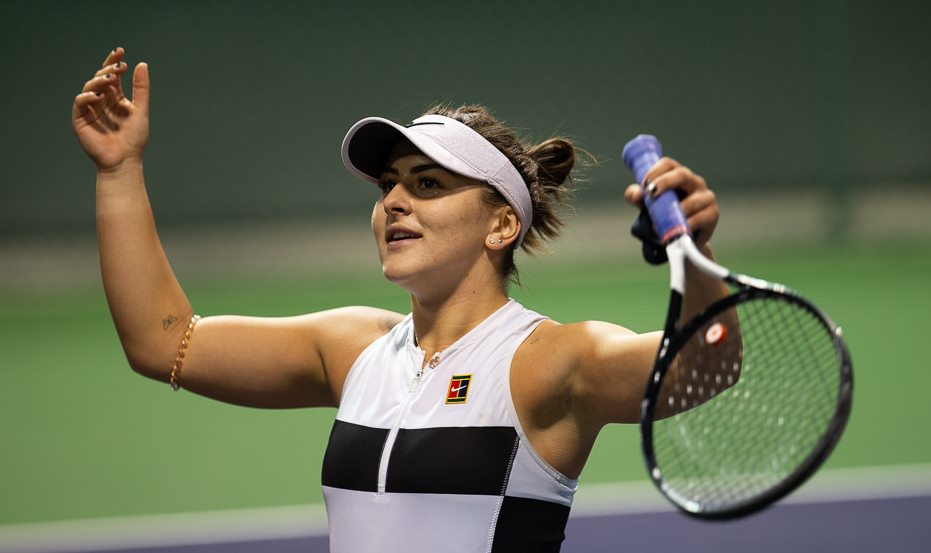
There was a lighter moment before Andreescu’s media conference after her win over Bouzkova on Tuesday. She mentioned that she was angry at herself for forgetting to put her trademark spiral hair tie around her right racquet arm (see above at Indian Wells) for the first two sets of her match on Monday. It was back in place for the resumption of her match on Tuesday. But because she wore her long-sleeved top, that was not obvious.
DABROWSKI: DOUBLES IN DOUBLES

Gabriela Dabrowski advanced to the second round of both doubles and mixed doubles on Thursday. Seeded No. 4 with Xu Yifan, Dabrowski and the 30-year-old Chinese defeated Irina Bara of Romania and Dalila Jakupovic of Slovenia 6-1, 1-6, 6-2 in women’s doubles.
The Canadian/Chinese duo dominated the first set before kind of losing their way in the second set. But they were at their big-hitting best, especially Dabrowski, in the third set.
“There was a little bit of a lack of focus, a couple of sloppy errors,” Dabrowski said about her side’s dip in the second set. “I don’t really think they did anything too special to win the set. It’s more just on us. We re-grouped straight away for the third. We finished very strong.” When it was pointed that she herself had finished very strong, Dabrowski smiled and said: “Well the balls came to me so I hit them.”
In the second round, Dabrowski and Xu will face the Chinese pairing of Han Xinyun and Wang Yafan.
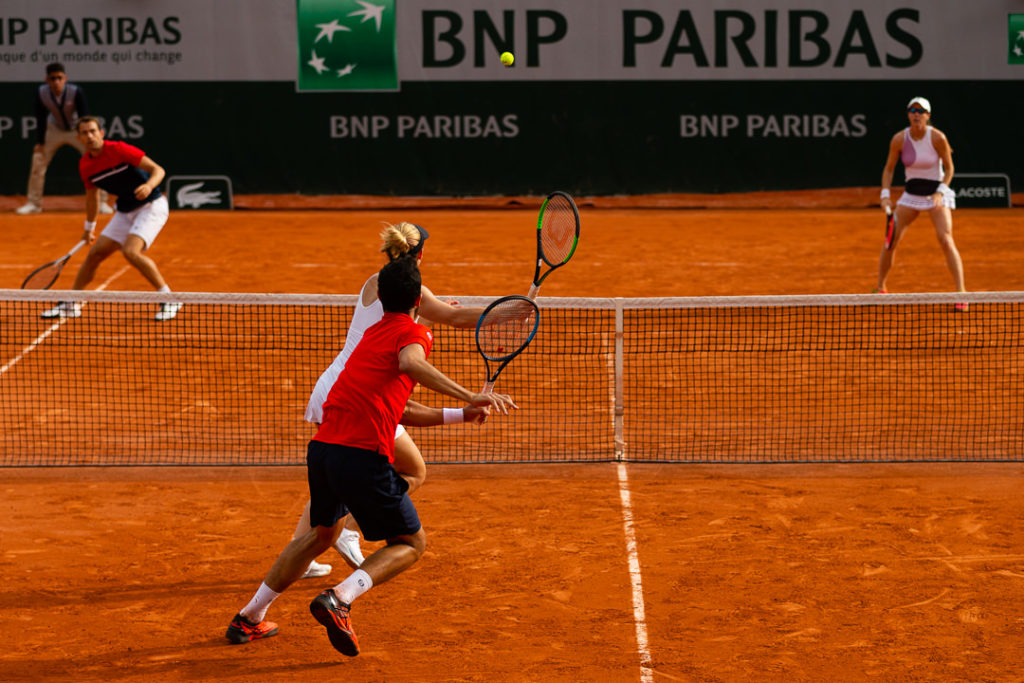
In her mixed doubles, second-seeded Dabrowski and Mate Pavic of Croatia never seemed seriously threatened as they beat Kaitlyn Christian of the U.S. and Frederik Nielsen of Denmark 6-4, 7-6(3). Dabrowski and Pavic were the 2018 Australian Open champions and followed that with a runner-up finish a year ago at Roland-Garros.
Their opponents in the second round will be Raluca Olaru of Romania and Franko Skugor of Croatia.
Talking with reporters about doubles and mixed doubles, Dabrowski said: “I think I like them both equally. I love doubles, whether it’s women’s or mixed. Mixed is a little bit more relaxed – obviously there are no ranking points involved so everybody is just having fun and hitting out. It’s a bit of a different vibe.”
About the man’s serve in mixed doubles, she said: “It’s faster and I like that. Because if you can make solid contact with their serve, it comes back at them just as fast. That, to me, is really fun.”
JUNIOR LINE-UP FOR ROLAND-GARROS
There are four Canadians in next week’s junior event at Roland-Garros led by last year’s semi-finalist, Leylah Annie Fernandez (above). The 16-year-old Montrealer, who played Fed Cup for Canada in the Czech Republic in April, was runner-up in the Australian Open juniors in January.
Also entered in the main draws are Liam Draxl of Newmarket, Ont., and Taha Baadi of Laval, Que.
Mélodie Collard of Gatineau, Que., is in the qualifying for the girls event.
PARIS POST CARD
It’s 6:30 p.m. on a weekday and this Parisienne is walking home with a freshly bought and baked baguette. It’s not difficult to imagine how good it’s going to taste.
